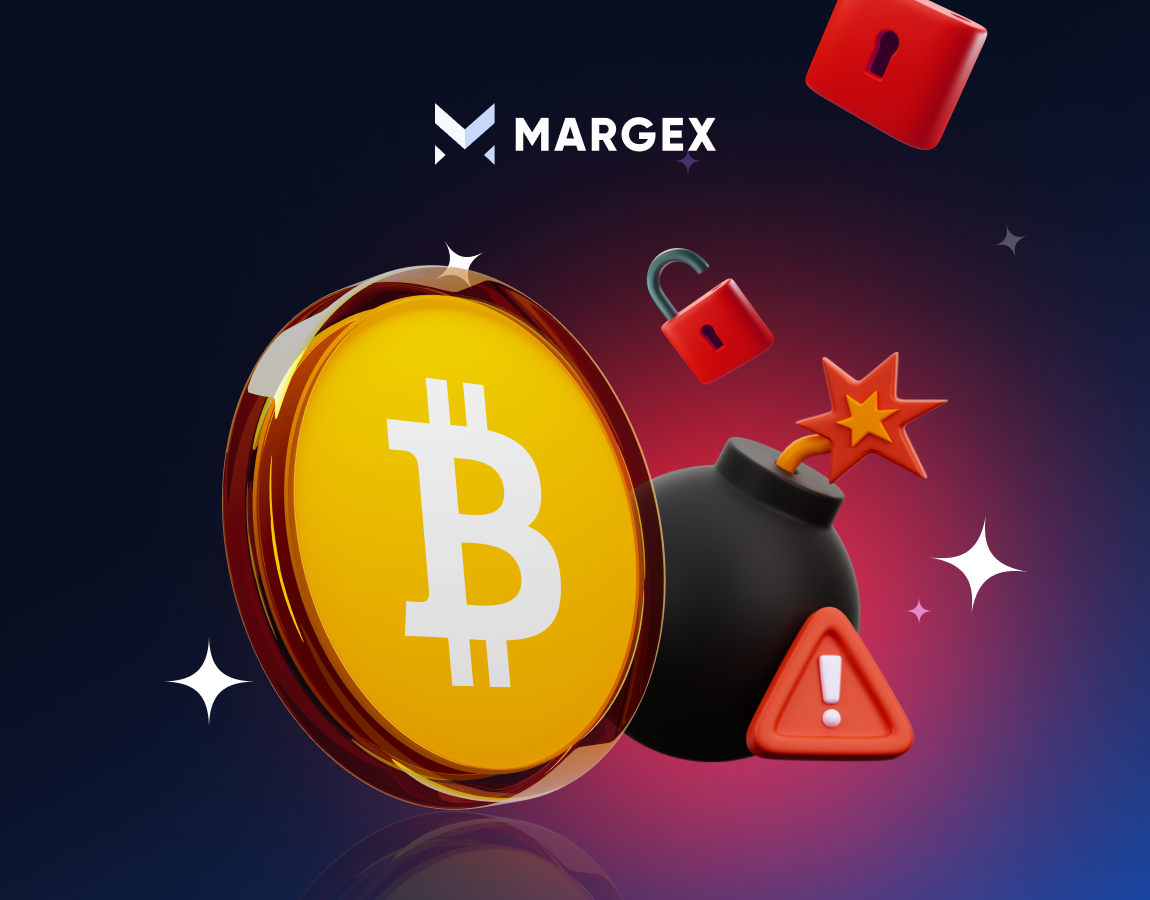What Are Major Cryptocurrency Investment and Withdrawal Scams?

The growth and innovation in the cryptocurrency sector are promising, but so is the turbulence it attracts. However, crypto investment scams tend to pretend to be exciting prospects that promise high returns and little investment risk.
They can be as sophisticated as the equally clever Ponzi schemes and equally deceptive initial coin offerings, where the skillful con men hook investors into their traps.
On a different level, withdrawal scams add another layer of difficulty, as investors find themselves trapped in a scheme designed to block, or at least masquerade, their digital assets withdrawal process. Speaking of, it’s tactics like phishing attacks or fake exchanges that try to get your personal information or funds.
Defining Cryptocurrency Scams
Digital assets offer great promise with the potential to revolutionize business and enable decentralized, individual control over financial transactions; however, there was a growing concern over cryptocurrency fraud in digital assets.
Phishing, rug pulls, fake giveaways, and impersonations are just some ways such scams come to fruition. They aim to either deprive the trader of their ‘profits’ or fool them into investing in this scam by falsely boasting that they are going to make trades that can generate huge ‘profits’ while also posing little to no ‘risk.’
The evolution of crypto scams has always been shaped historically, matching the development of related technologies. In their early days, scams were simple: fake exchanges and wallet scams, for example. But as the market matured, more sophisticated moves, such as pump-and-dump, came to replace them.
The public was unfamiliar with blockchain tools and the main attraction, and scammers capitalized on this by presenting themselves as trusted experts or leaders of the blockchain field.
Typical characteristics of crypto scams include:
– Using aggressive marketing tactics.
– Claims of high returns being unrealistic.
– Lack of transparency
– Pressure to invest quickly
The absence of a central regulatory authority makes targeting fraudsters especially easy, rendering it difficult for victims to be resolved. The lack of anonymity of true ownership of crypto transactions and the irreversible nature of these transactions add to the difficulties in tracing and correcting these scams.
To prevent becoming prey to these fraudulent schemes, it is very important to do Thorough research and be cautious about investments with implausibly high returns. The U.S. Securities and Exchange Commission (SEC), for example, issues alerts and guidance to aid traders in recognizing and avoiding such provider abuse.
Careful practice of maintaining vigilance, mindfulness, and research, including research on social media promotions or unbelievable offers, are important ways to figure out the cryptocurrency landscape without fear. Along with getting familiar with the common traits of these fraudulent schemes, you also have to be on the lookout for unrealistic assurance.
Understanding the Mechanics of Cryptocurrency Investment Scams

There are different kinds of crypto scams, such as Ponzi schemes, pyramid schemes, initial ICO scams, token scams, pump-and-dump scams, and cloud mining scams.
Crypto Ponzi schemes are fraudulent projects that promise crazy high returns on investments. These scams allow new participants to use their funds to make returns to previous investors, making the appearance of a legitimate, lucrative business. But when that flow of new investors dries up, these schemes invariably bust, and many people are left high and dry with their money.
So pyramid schemes, like Ponzi schemes, rely on recruiting new members. You’re promised incentives, perhaps even compensation if you can get more recruits. This structure is unsustainably dependent on a constantly replenishing supply of new members to do anything. The entire scheme is likely to fail without this constant recruitment.
What other scams exist besides fraudulent ICOs and token sales that target funds for nonexistent or illegitimate cryptos? In this case, scammers take investors’ money and information, take it away, and give them worthless tokens or no yield on their investment.
Pump-and-dump schemes manipulate the price of a digital asset based on deceptive or overhyped claims. At some particular price point, after which traders sell their holdings for a profit, the price crashes to a massive loss for the traders who bought at these inflated prices.
Cloud mining scams are a great way to confuse people with a promise to be a part of a cryptocurrency mining experience without the hardware required. In reality, these are usually frauds and don’t mine any cryptocurrency. Instead, they wheel and deal new funds from new investors to repay previous purchasers, much like a Ponzi scheme.
According to a report from crypto research firm Chainalysis published in late 2018, the cryptocurrency pyramid and Ponzi schemes market was at least $7.8 billion in 2022 alone.
Forsage and Trade Coin Club were two of the crypto sector’s most renowned prosecuted Ponzi schemes. Before they collapsed, Trade Coin Club and Forsage appeared to rake in nearly $974 million and more than $295 million from investors, respectively.
It is extremely important to exercise caution before participating in any crypto project. Be cautious of projects whose returns are high and risk low, have no transparency, or are unregistered. Often, these characteristics indicate potential fraudulent activity.
Understanding Withdrawal Scams and Their Strategies
With withdrawal scams such as withdrawal fraud, phishing attacks, and the establishment of fake exchanges becoming a significant issue within the cryptocurrency sector, the deceptive nature of these scams is to entice the user to part with their digital assets or sensitive personal information.
Withdrawals are especially popular phishing schemes. Fraudsters create fraudulent online platforms or send misleading emails through email, including links to fake websites like a real business or digital wallet.
This way, they deceive people by providing their login credentials or confidential information, which, by exploiting the scammers, allows them to access victims’ crypto holdings through the absence of knowledge or temporarily making ATM machines unavailable.
The most common approach is to set up bogus exchange platforms and wallets. But then there are these fraudulent sites that attract investors with promises of big returns, and sometimes, the fee for setting up an account is required.
After the victim deposits his funds, the scammers misappropriate the money and leave behind false displays of trades or earnings, making it appear that the victim made money. The scammers actually absorb the funds, and no genuine trading takes place.
Also, withdrawals refer to the creation of fake cryptocurrency ventures. These schemes offer investors the opportunity to scoop almost impossible tokens to sell or withdraw. Fraudsters cause the token’s value to plummet quickly, stalling investors from cashing out and leaving them with significant losses in their wallets.
To avoid such scams, users need to follow best practices, like using trustworthy crypto exchanges and wallets, always using “HTTPS” in URLs for secure connections, keeping an eye on promises about huge returns, and never sharing their private keys with anybody. Awareness and due diligence are crucial to avoid becoming the next victim of withdrawal scams in cryptocurrency.
Insights from Historical Crypto Scams
A deep look at previous crypto scams reveals much about how scammers work and the impact they have on investors and the rest of the cryptocurrency sector. From this understanding, you can more clearly evaluate the opportunities to come and discern what is a trustworthy investment from a potential fraud.
Major Historical Crypto Scams
OneCoin Scandal (2014): “It’s called OneCoin, another fake coin designed as a pyramid scheme, but it’s called cryptocurrency,” noted Vuola. Lacking actual trading activity, it acted as an “…investment,” a shell term describing an empty vanity sign for an empty garbage can. It lost substantial sums of money when Ignatova disappeared.
Bitconnect (2016): Specifically, Bitconnect lured investors in by promising high profits on automated trading bots that appeared to be real until investors discovered it was a Ponzi scheme. It worked fine initially until regulatory investigations brought it down, and people lost a lot of money.
Common Scam Tactics
Aggressive Marketing: OneCoin and Bitconnect utilized high-pressure, persuasive marketing to entice potential investors.
Multi-Level Marketing and Ponzi Structures: Scams like these would offer some sort of benefits to existing investors to recruit more new participants, so they wouldn’t be sustainable financial pyramids.
False Promises of High Returns: A common theme in many crypto scams, such as Ponzi schemes and multi-level marketing, is that investors are promised high financial returns without a lot of risk.
Lessons Learned
Critical Evaluation of Investment Projects: Before investing money in cryptocurrency, it is necessary to understand the technology and business model of cryptocurrency investment.
Caution Against Overpromising Projects: If an opportunity seems too good to be true, it’ll most likely be too good to be true.
Importance of Regulatory Scrutiny: More stringent regulatory oversight and diligent investor scrutiny could have curtailed or avoided many scams.
Consequences for Participants and the Crypto Market
Financial Losses: Investors lost billions of dollars due to these frauds, and alleged individual losses often amounted to significant sums.
Damage to Market Credibility: These fraudulent actions have tarnished the crypto market’s general credibility, which has made investors more cautious.
Urgent Need for Regulatory Frameworks: The fact that scams are so common shows how important it is to have rules that protect buyers and keep the market honest.
Recognizing and Preventing Cryptocurrency Scams
To successfully protect against and spot cryptocurrency scams, it is important to know the common warning signs, use safe ways to store and send money, and keep an open mind.
Warning Signs of Crypto Investment Scams
Unrealistic Promises: Be careful when someone promises you big profits with little risk, which is something you should avoid. Such claims could be signs of possible scams.
Aggressive Marketing Tactics: Be wary of deals that claim to be better than they are, especially ones you see on social media sites. They’re usually a sign of dishonesty.
Lack of Transparency: Be careful of projects that give you vague details about how they work, their development teams, or their white papers. This kind of confusion can be a sign of a possible scam.
Unusual Payment Requests: If someone requires cryptocurrency payments, especially if they seem like they are trying to trick you, you should be wary of their legitimacy.
Best Practices for Safe Crypto Transactions and Storage
Utilize Reputable Exchanges: Trust cryptocurrency exchanges that have been around for a while, have a good image and have a history of being safe and reliable.
Implement Secure Storage Solutions: Hardware wallets are the best way to store large amounts of cryptocurrency because they make it harder for thieves to steal your coins.
Adopt Strong Passwords and Enable 2FA: For added security, make sure each cryptocurrency account has a strong, unique password and turn on two-factor authentication (2FA).
Stay Alert to Phishing Attempts: Watch out for emails or messages that ask for personal information or send you to websites you don’t know. These could be phishing scams that are meant to steal your information.
Insurance protects you from falling prey to cryptocurrency scams by being aware of the signs of scams, having secure practices for transfer and storage, and acquiring updates about the ever-changing cryptocurrency regulations.
When you encounter offers that sound too good to be true, it is always advisable to be on the lookout and be very thorough before and after investing in cryptocurrency.
Future Projections for Cryptocurrency Scams
In the future of crypto scams, threats will change, blockchain security will improve, and people need to learn more about the field.
Trends and Tactics in Crypto Scams
Sophisticated Scams: Cybercriminals are constantly improving their methods, using new technologies like social engineering, ransomware, and scams to exploit people who don’t know what’s happening.
Rug Pulls and Flash Loan Attacks: In these scams, thieves take money from a project or exploit flaws in decentralized finance (DeFi) platforms to get rich at the expense of investors.
AI and Cybersecurity: Artificial intelligence might attract fraudsters as it is increasingly integrated into security protocols, thereby fostering the development of more advanced crypto frauds.
Utilizing Blockchain and Smart Contracts to Prevent Scams
Immutability and Transparency: Blockchain’s basic traits, immutability, and transparency, help to provide strong barriers against dishonest behavior. These same characteristics, meanwhile, present difficulties since undoing transactions after fraud is discovered can be quite complex.
Smart Contract Audits: Preventing security vulnerabilities depends critically on regular examinations and improvements of intelligent contracts. Time locks and multi-signature wallets are two strict safety precautions DeFi systems are increasingly using to guard users.
Enhanced Security Protocols: Encryption techniques and multi-factor authentication reduce the risk of fraud in crypto transactions, promoting general security.
The Significance of Education and Public Awareness
Essential for Prevention: Preventing fraud depends on teaching people about the dangers and warning indicators linked with cryptocurrencies. Knowing that common frauds include phishing, impersonation, and Ponzi schemes helps traders avoid victimizing themselves.
Staying Informed: Traders must stay current on the latest advances in blockchain technology and cybersecurity to better understand developing risks and the best ways to protect their assets.
Collaboration with Regulatory Bodies: By working together, authorities, cybersecurity companies, and crypto platforms can produce standards and educational materials to safeguard cryptocurrency users.
The Final Thoughts
Over the past decade, we have seen how mere frauds in fraudulent exchanges have transitioned to sophisticated pump-and-dump schemes that leverage people’s tunnel vision regarding blockchain technology.
Without central regulation, there is no centralized body tracking and dealing with crypto scams. And the ‘irreversible’ nature of transactions does not make it any easier. Traders must do their research and stay skeptical to safeguard themselves from opportunities that promise great rewards.
The adage goes that something that seems too good to be true usually is. Meanwhile, regulatory bodies like the U.S. SEC issue constant warnings and tell us how to identify and evade these scams.
This includes implementing the abovementioned strategies and being cautious when taking on new opportunities. By staying informed about what’s happening in the crypto space (tech progress and rising threats), you’ll be ready to protect yourself and your assets.



